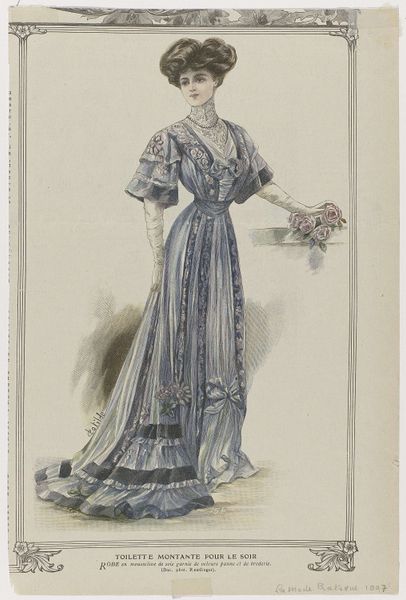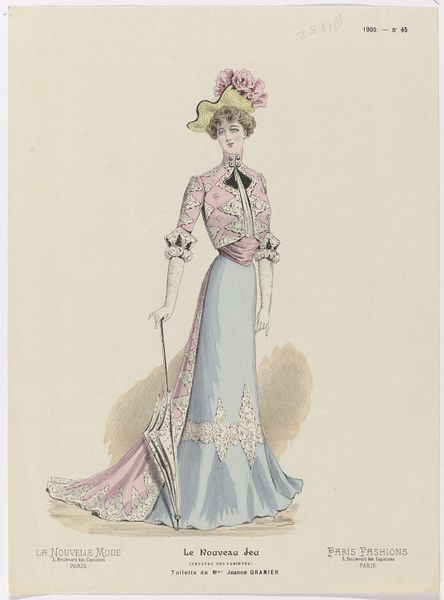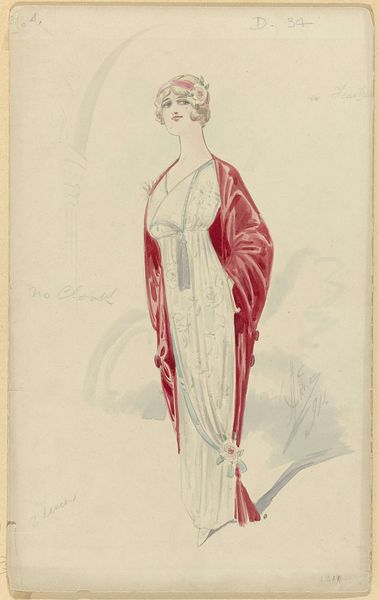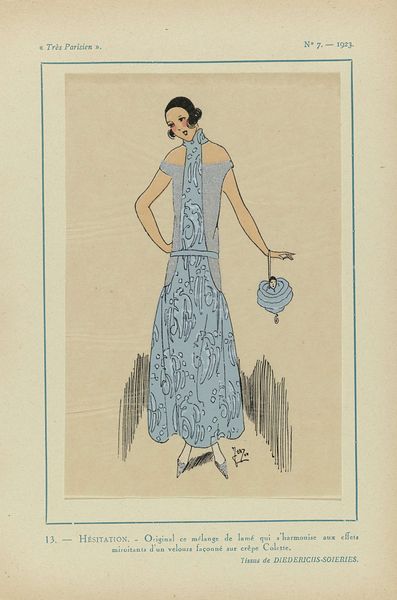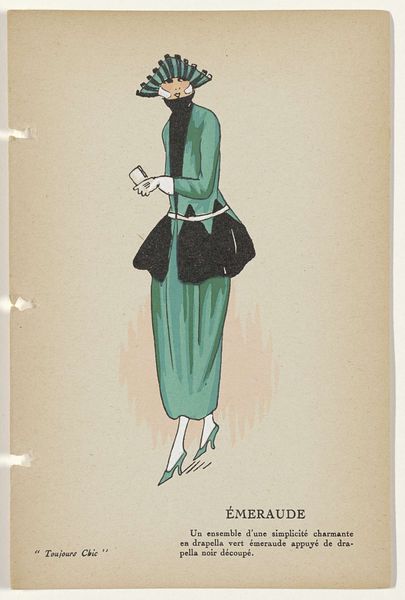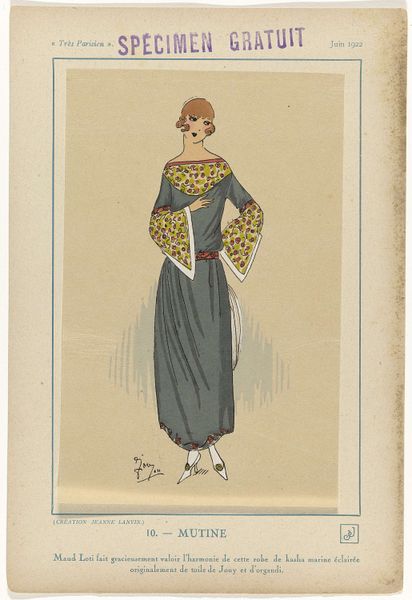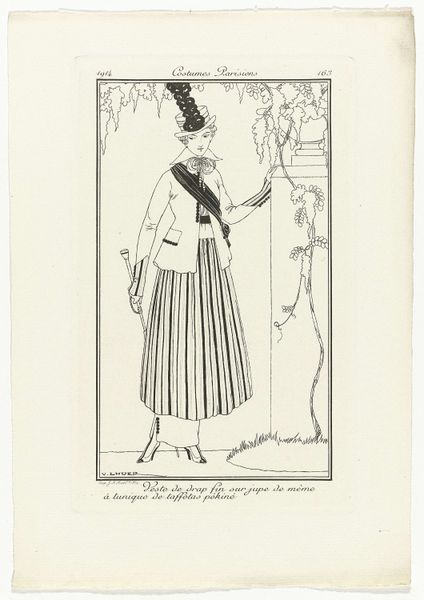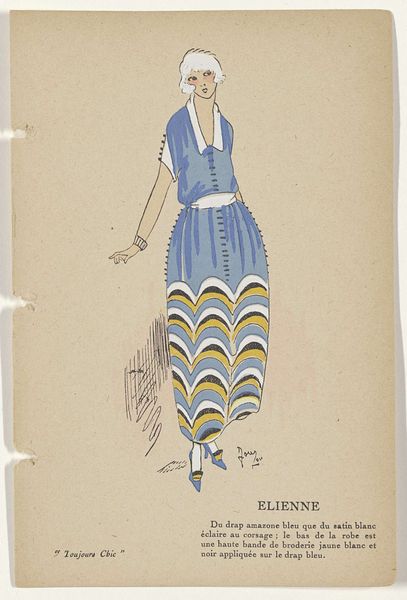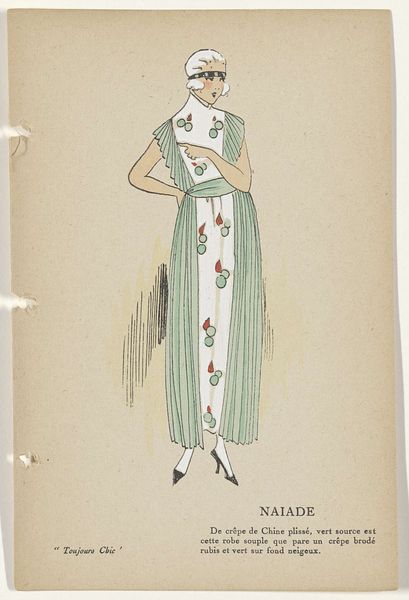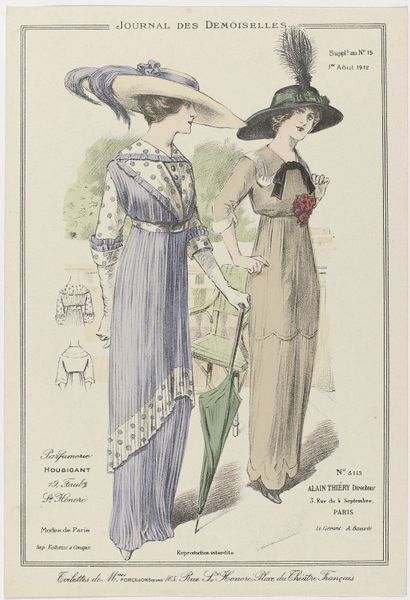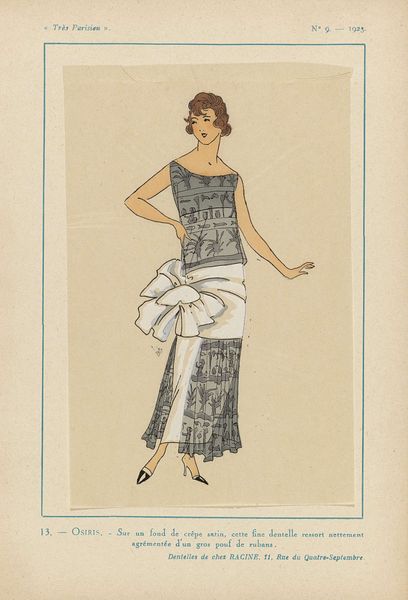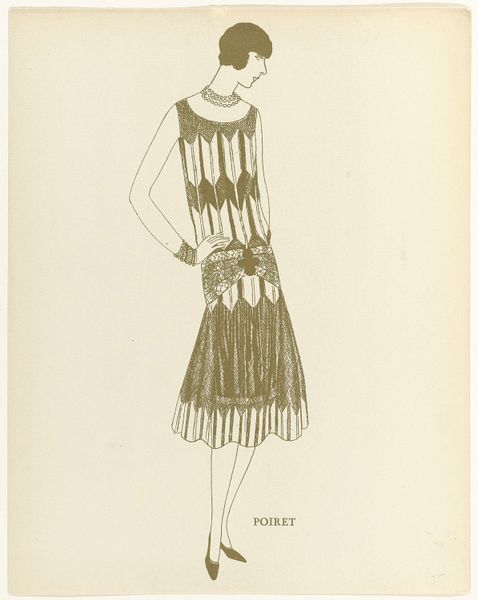
Dimensions: height 366 mm, width 226 mm
Copyright: Rijks Museum: Open Domain
Editor: This is "Young Woman in Black and White Checked Ensemble, 1914," a watercolor and pencil drawing. The rendering of the woman's garments seems incredibly detailed and stylized. What draws your eye when you look at this drawing? Curator: My gaze lingers on the symbolism of the grid, that black and white checkerboard pattern. Think of it as an archetypal field, a prepared ground. Is it a foundation, a game board, or even a prison? The figure is caught within this ordered space, suggesting a dialogue between freedom and restriction. Editor: A game board...or a prison. That gives the image a much darker tone. Do you think that was intentional? Curator: Absolutely, artistic intentions always consider symbols. The grid's associations range from rational structure to confining limitation. The woman’s elegant pose and attire suggest a striving for individual expression, yet she's undeniably framed, maybe even subdued by the pervasive geometry. Editor: I hadn't really considered how restrictive the checkered pattern looks! The art nouveau lines soften the geometric aspects of the drawing overall though, don't you think? Curator: Precisely. That push and pull between organic and geometric, soft and sharp—think of those binaries as two poles, actively vibrating within this piece. The gentle watercolors are in dynamic contrast with the underlying order of the checks. How do you interpret that tension? Editor: I guess I see how the artist used opposing techniques to emphasize the different components of the piece, suggesting different roles within the overall picture. This close looking has really given me a fresh perspective. Curator: Exactly! When we really analyze a work's formal and symbolic aspects, we see a convergence of artistic and cultural intentions, revealing the psychology of the artist and, by extension, society itself.
Comments
No comments
Be the first to comment and join the conversation on the ultimate creative platform.
